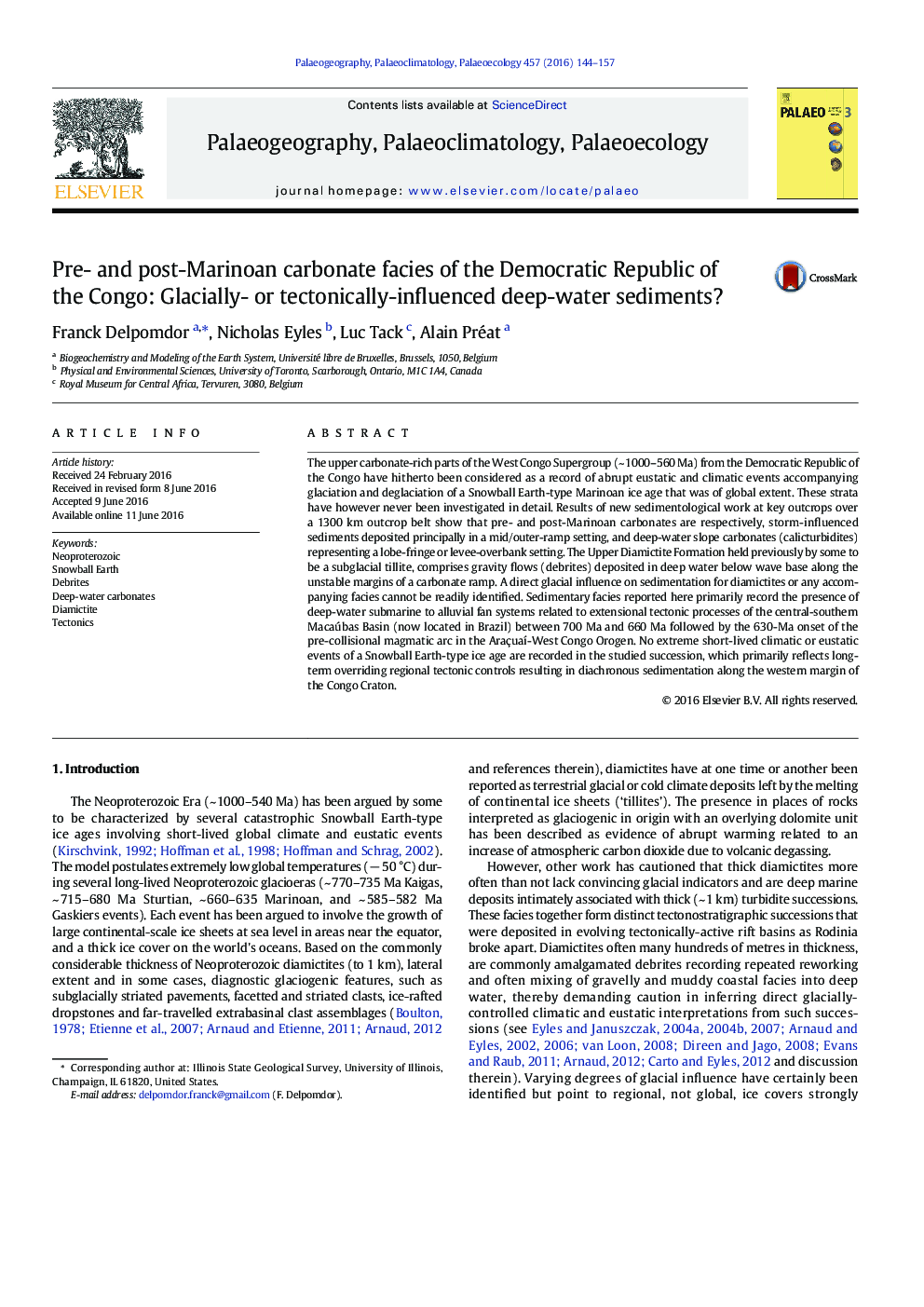| Article ID | Journal | Published Year | Pages | File Type |
|---|---|---|---|---|
| 6349165 | Palaeogeography, Palaeoclimatology, Palaeoecology | 2016 | 14 Pages |
Abstract
The upper carbonate-rich parts of the West Congo Supergroup (~Â 1000-560Â Ma) from the Democratic Republic of the Congo have hitherto been considered as a record of abrupt eustatic and climatic events accompanying glaciation and deglaciation of a Snowball Earth-type Marinoan ice age that was of global extent. These strata have however never been investigated in detail. Results of new sedimentological work at key outcrops over a 1300Â km outcrop belt show that pre- and post-Marinoan carbonates are respectively, storm-influenced sediments deposited principally in a mid/outer-ramp setting, and deep-water slope carbonates (calicturbidites) representing a lobe-fringe or levee-overbank setting. The Upper Diamictite Formation held previously by some to be a subglacial tillite, comprises gravity flows (debrites) deposited in deep water below wave base along the unstable margins of a carbonate ramp. A direct glacial influence on sedimentation for diamictites or any accompanying facies cannot be readily identified. Sedimentary facies reported here primarily record the presence of deep-water submarine to alluvial fan systems related to extensional tectonic processes of the central-southern Macaúbas Basin (now located in Brazil) between 700Â Ma and 660Â Ma followed by the 630-Ma onset of the pre-collisional magmatic arc in the AraçuaÃ-West Congo Orogen. No extreme short-lived climatic or eustatic events of a Snowball Earth-type ice age are recorded in the studied succession, which primarily reflects long-term overriding regional tectonic controls resulting in diachronous sedimentation along the western margin of the Congo Craton.
Related Topics
Physical Sciences and Engineering
Earth and Planetary Sciences
Earth-Surface Processes
Authors
Franck Delpomdor, Nicholas Eyles, Luc Tack, Alain Préat,
